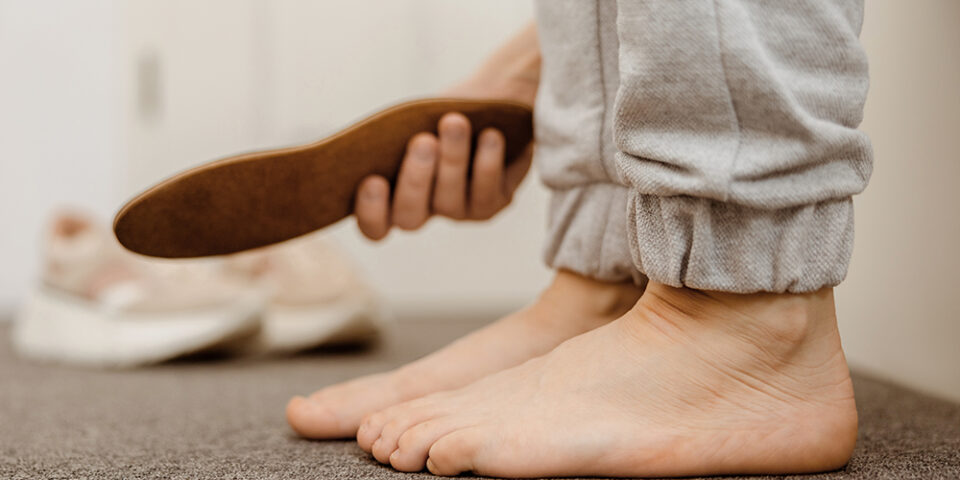What does it mean to have flat feet?
When most people stand up, the inside portion of the foot between the ball of the foot and the heel will not touch the ground. This is called the ‘arch.’ For those with flat feet, the entire foot touches the ground when standing, and there isn’t much of an arch. Your toes will also usually point outwards instead of straight ahead.
What does it mean to have flat feet? Can a lack of arch cause discomfort or health problems? Orthopedic surgeon Brian Fisher, MD, answered common questions about flat feet and explained what you need to know.
What causes flat feet? Is the condition hereditary?
“Flat feet absolutely can run in families and be an inherited issue,” said Dr. Fisher, “But that isn’t the only potential cause of this concern.”
This problem can also be caused by chronic changes to the shape of the foot due to ongoing issues with tendon and ligament disorders, so it’s possible to be born with an arch to your foot but develop flat feet later.
What’s the difference between flat feet and fallen arches?
“Both of these issues have a very similar appearance,” said Dr. Fisher. “People with fallen arches are those who were born with a normal arch in the foot and maintained it over time, but who lose the height of their arch due to changes in their supportive joints, ligaments and tendons.”
Can flat feet cause problems?
Many people don’t have any problems at all. For people who have fallen arches, or who were born without much of an arch but who don’t experience any pain or discomfort, treatment usually isn’t recommended. There’s no need to ‘create’ an arch if you are doing fine without one.
Over time, however, having flat feet puts more stress on your tendons, nerves and the ligaments along the inside of the foot and in the ankle, as well as adding stress to joints in the hip and knee. This can cause discomfort, a further loss of arch, arthritis in the foot and even sometimes significant pain.
Can flat feet be corrected?
“For those struggling with pain because of it, there are definitely treatment options available not only to help with ongoing symptoms of discomfort, but also to help correct the problem itself,” Dr. Fisher said.
Usually, early treatments involve using orthotics, or shoe inserts, that help create a more normal alignment of the foot. This helps to relieve the added pressure flat feet cause and relieves pain. If orthotics aren’t helping with the pain, surgery may be recommended to realign the bones within the foot.
Can exercises help?
“I wouldn’t recommend avoiding any form of exercise or activity at all,” Dr. Fisher said. “Regular exercise is beneficial! If your feet are flat and they hurt, lower impact activities such as walking, swimming, biking or elliptical are best.”
Working with a physical therapist can also help you to learn specific, targeted exercises that help to strength an important tendon on the inside of the foot. This tendon supports your arch, so strengthening it should help to relieve pain.
What shoes are better options if you have flat feet?
“There are several great shoe brands on the market to choose from,” said Dr. Fisher. “I recommend a shoe which has good support for the mid portion of your foot. Brands such as Vionic and Orthofeet are designed to provide support for specific foot conditions, while well-known shoe brands New Balance, Hoka or Brooks typically provide on-trend shoe designs that still have plenty of support. However, each person typically finds comfort in different shoes so finding one that works well for you is key!”
Find an orthopedic specialist you trust
Find a provider who’s right for you by viewing their online profiles, star ratings and reviews.
Find an Orthopedic Doctor

